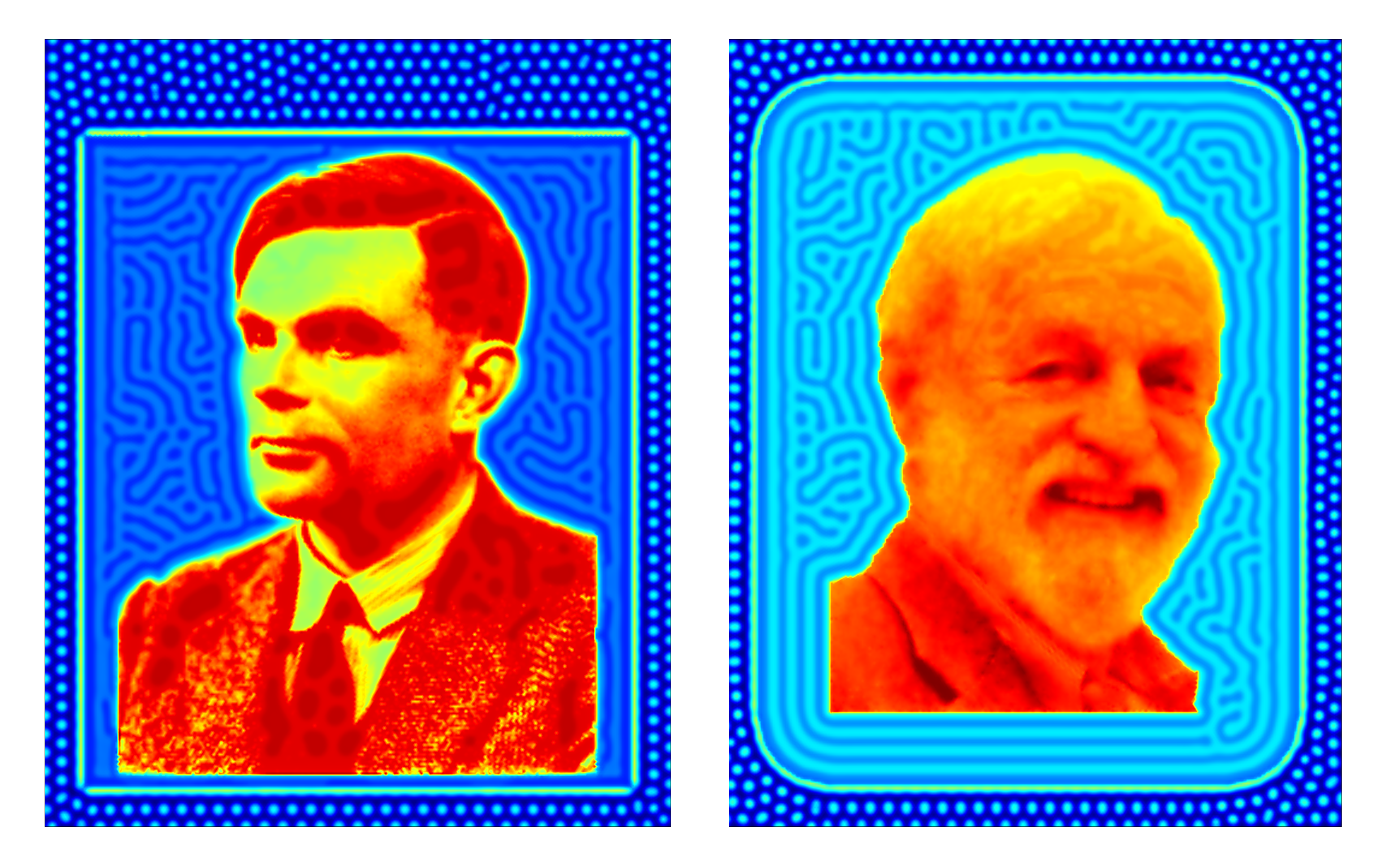Andrew Krause - Turing Pattern Faces

Turing's theory of morphogenesis posited that chemical reactions and diffusion brought about spatial structure (patterns) from uniformity. He noted that his model was an idealisation, saying "Most of an organism, most of the time, is developing from one pattern into another, rather than from homogeneity into a pattern."
Shown are examples of heterogeneous Turing patterns designed to have both stripes and spots, as well as 'complex prepatterns' (namely, the faces of Alan Turing and James Murray). The ideas behind 'designing' such patterns can be found in the paper, "Bespoke Turing Systems," written with Eamonn Gaffney and Thomas Woolley.
Andrew Krause is a Postdoctoral Research Associate at the Mathematical Institute.

